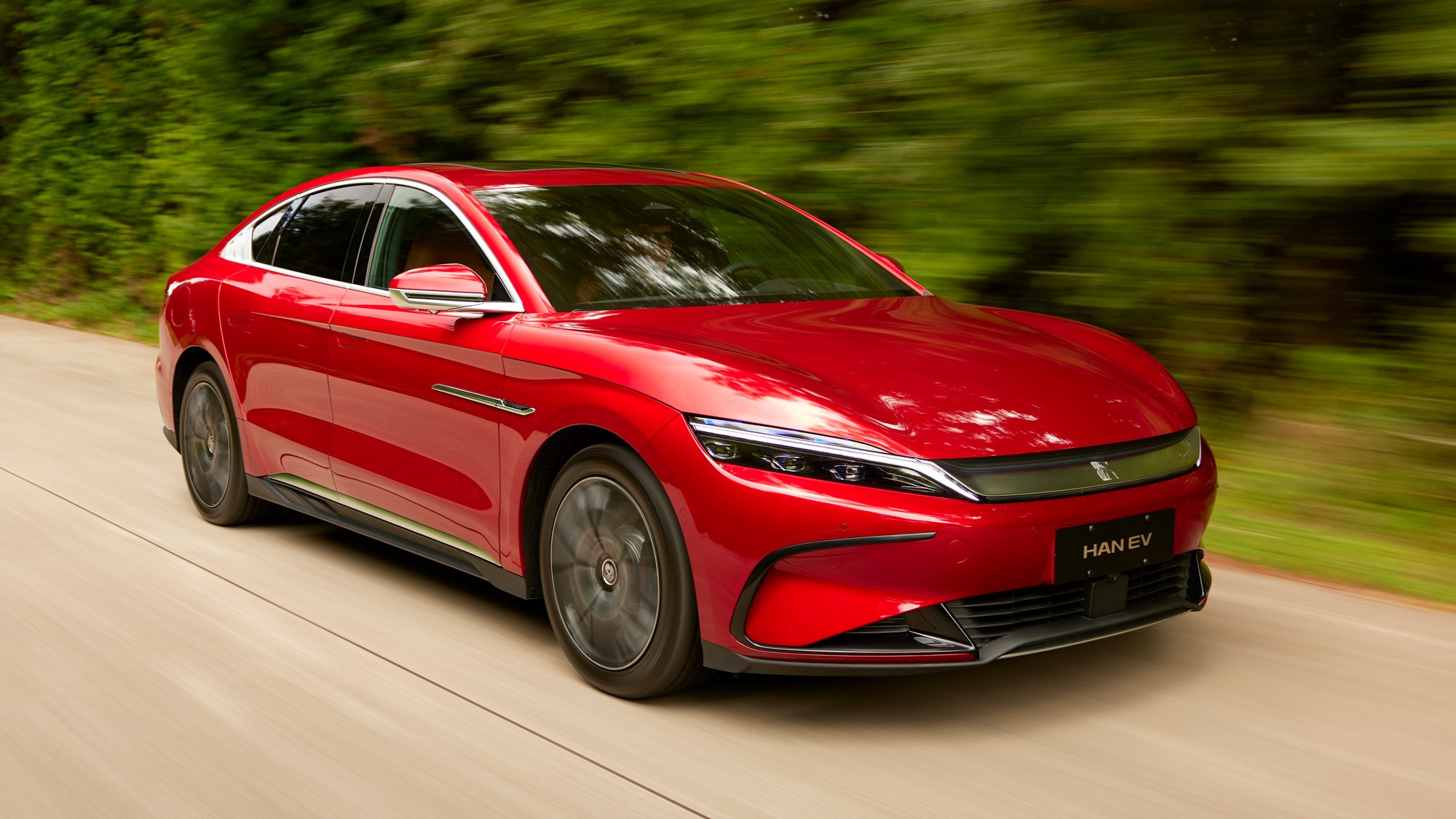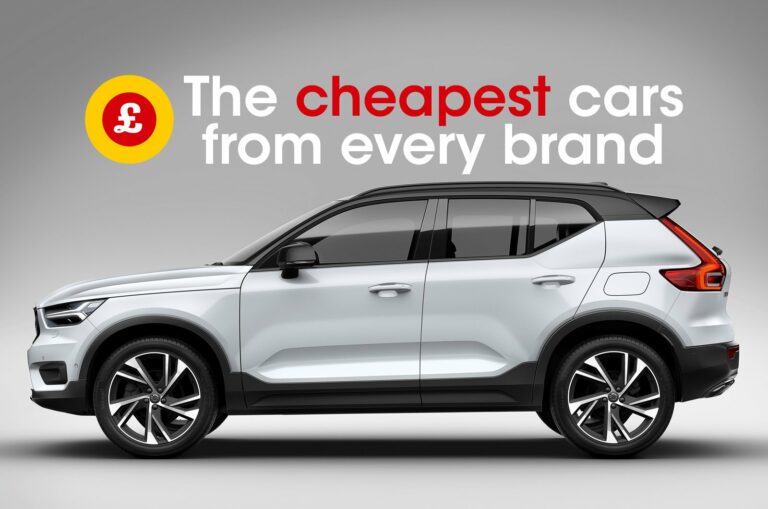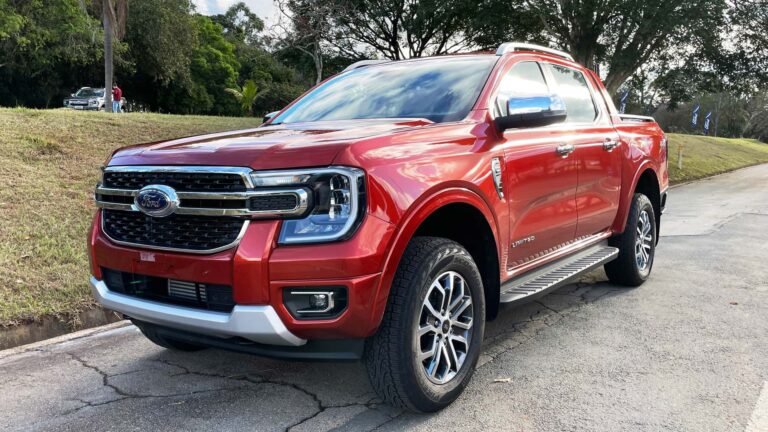What Is A Car Brand? More Than Just a Badge
What Is A Car Brand? More Than Just a Badge cars.truckstrend.com
The world of automobiles is a vast and fascinating landscape, populated by an array of vehicles, technologies, and innovations. At the heart of this intricate ecosystem lies the concept of the "car brand." Often perceived simply as the logo on a car’s hood or trunk, a car brand is, in reality, a profoundly complex and multi-faceted entity. It is a promise, a reputation, a design philosophy, an engineering ethos, and an entire customer experience wrapped into a singular identity. Understanding what a car brand truly represents is crucial for consumers making purchasing decisions, for manufacturers striving for market leadership, and for anyone seeking to grasp the deeper currents of the automotive industry.
In essence, a car brand is the sum total of all perceptions, emotions, and experiences associated with a particular automotive manufacturer’s products and services. It’s the distinct personality and character that differentiates one automaker from another, far beyond the mere mechanics of four wheels and an engine. This comprehensive article will delve into the anatomy of a car brand, exploring its core pillars, strategic importance, evolutionary dynamics, and practical implications, providing a detailed guide to this fundamental concept.
What Is A Car Brand? More Than Just a Badge
The Anatomy of a Car Brand: Beyond the Badge
To truly define a car brand, we must look beyond its superficial elements. While a logo (like Mercedes-Benz’s three-pointed star or BMW’s kidney grille) is its most recognizable symbol, it’s merely the tip of the iceberg. A car brand is an intricate tapestry woven from various threads:
- Design Language: This refers to the consistent aesthetic principles that guide the look and feel of a brand’s vehicles. Think of Volvo’s understated elegance and safety-first lines, or the aggressive, sporty stance characteristic of a Lamborghini. This visual identity creates immediate recognition and conveys underlying brand values.
- Engineering Philosophy: Every brand approaches vehicle development with a distinct mindset. BMW champions "ultimate driving machines" focusing on dynamic performance and driver engagement, while Toyota prioritizes reliability, efficiency, and practical usability. This philosophy dictates everything from engine design to chassis tuning.
- Heritage and Legacy: The history of an automotive brand often plays a significant role in its identity. Ferrari’s racing pedigree is inextricably linked to its modern sports cars, just as Ford’s legacy is tied to mass production and accessibility. This heritage provides a narrative and a sense of continuity.
- Target Audience and Market Positioning: Brands are often crafted with a specific demographic or need in mind. Jeep targets adventure seekers, while Rolls-Royce caters to the ultra-luxury segment. This positioning influences pricing, features, and marketing messages.
- Values and Mission: What does the brand stand for? Is it innovation (Tesla), safety (Subaru), sustainability (Polestar), or rugged capability (Land Rover)? These core values resonate with customers and guide the brand’s strategic direction.
- Customer Experience: This encompasses everything from the dealership environment and sales process to after-sales service, warranty support, and even the community of owners. A premium brand often offers a concierge-like service, while a mass-market brand might focus on widespread service networks and affordability.

In essence, a car brand is the complete identity that a manufacturer cultivates, aiming to create a unique perception and emotional connection with its audience.
The Core Pillars of Brand Identity
Delving deeper, several key pillars consistently support and define a car brand’s identity:

-
Heritage and Legacy: A brand’s history isn’t just a collection of old photos; it’s a living narrative that shapes its present and future. Brands like Porsche and Mercedes-Benz leverage their storied pasts in motorsports and luxury innovation to reinforce their current image of performance and prestige. This historical context provides authenticity and a sense of enduring quality.

Design Language: Beyond just looking good, design communicates. Audi’s sharp lines and single-frame grille convey precision and technological advancement. Chrysler’s bold, American aesthetic speaks to a different set of values. A consistent design language builds strong recognition and helps define the brand’s character without words.
-
Engineering Philosophy & Performance: This pillar defines the driving experience. Is the car designed for exhilarating speed, serene comfort, robust utility, or fuel-sipping efficiency? Mazda’s "Jinba Ittai" (rider and horse as one) philosophy emphasizes driver engagement, while Lexus focuses on quiet refinement and reliability. This core engineering DNA is felt in every mile.
-
Target Audience & Market Positioning: Who is the car built for, and where does it sit in the market? A brand might position itself as an affordable entry point, a reliable family workhorse, a high-performance luxury vehicle, or a niche adventurer. This strategic positioning dictates pricing, features, and marketing campaigns.
-
Values & Mission: Modern consumers often align with brands that reflect their own values. Brands promoting environmental sustainability (e.g., Polestar, early Tesla), social responsibility, or cutting-edge innovation can build deep connections beyond just the product’s features. These values drive corporate decisions and brand messaging.
-
Customer Experience: The journey of owning a car extends far beyond the point of sale. The quality of dealership interactions, the availability and efficiency of service, the warranty, and even the sense of community among owners contribute significantly to the overall brand perception. A positive customer experience builds loyalty and advocacy.
The Strategic Importance of a Strong Car Brand
The cultivation of a strong car brand is not merely an aesthetic exercise; it is a critical business imperative with profound implications for both manufacturers and consumers.
For Manufacturers:
- Market Differentiation: In a crowded market, a strong brand provides a unique identity that sets a company apart from competitors.
- Customer Loyalty and Retention: A positive brand perception fosters trust and emotional connection, leading to repeat purchases and higher customer lifetime value.
- Pricing Power and Profitability: Established, reputable brands can command higher prices and better profit margins due to perceived value and desirability.
- Brand Extension and Diversification: A strong core brand allows for the successful introduction of new models, segments (e.g., SUVs from luxury sedan brands), or even sub-brands (e.g., Lexus from Toyota, Genesis from Hyundai).
- Attracting Talent: Top engineers, designers, and marketers are drawn to work for prestigious and innovative brands.
For Consumers:
- Trust and Reliability: A well-established brand often implies a certain level of quality, safety, and reliability, providing peace of mind.
- Emotional Connection and Aspirational Value: For many, a car is more than transportation; it’s a statement. Brands evoke emotions, reflect lifestyles, and can be aspirational symbols.
- Indicator of Quality and Features: Brands often specialize in certain areas (e.g., Audi for interior tech, Volvo for safety), making it easier for consumers to find what they prioritize.
- Resale Value: Strong brands typically hold their value better in the used car market, offering a tangible financial benefit.
- Simplifies Purchasing Decisions: With thousands of models available, brand reputation acts as a powerful filter, helping consumers narrow down choices based on their needs and preferences.
How Car Brands Evolve and Adapt
No brand is static. The automotive industry is in a constant state of flux, driven by technological advancements, changing consumer demands, and global challenges. Car brands must continuously evolve to remain relevant and competitive.
- Innovation and Technology: The shift towards electric vehicles (EVs), autonomous driving capabilities, and advanced connectivity (infotainment, over-the-air updates) is forcing brands to redefine their core offerings. Traditional brands like Mercedes-Benz and BMW are investing heavily in EV platforms, while new players like Tesla have built their entire brand around cutting-edge technology.
- Sustainability and Social Responsibility: Growing environmental consciousness means brands are increasingly judged on their eco-friendly manufacturing processes, ethical sourcing, and commitment to carbon neutrality. This impacts supply chains, materials used, and public perception.
- Marketing and Branding Strategies: The digital age has transformed how brands interact with consumers. Social media, influencer marketing, and personalized digital experiences are crucial for engaging new generations and maintaining brand relevance.
- Mergers and Acquisitions: Ownership changes can significantly impact brand identity. When a luxury brand is acquired by a larger group (e.g., Maserati under Stellantis, Bentley under Volkswagen Group), there’s a delicate balance between leveraging shared resources and preserving unique brand DNA.
- Challenges: Brands face numerous challenges, including maintaining quality control, managing recalls, adapting to new regulations (e.g., emissions standards), navigating economic downturns, and protecting their reputation in an always-on news cycle.
Practical Advice for Understanding Car Brands
For anyone looking to purchase a vehicle or simply gain a deeper appreciation for the automotive world, understanding car brands goes beyond just reading advertisements.
- Research Beyond Marketing: Don’t just rely on glossy brochures. Read independent reviews, consult owner forums for real-world experiences, and look at long-term reliability data from organizations like J.D. Power or Consumer Reports.
- Consider Your Needs First: Before falling for a brand’s allure, honestly assess your priorities: safety, fuel economy, performance, cargo space, luxury, off-road capability, technology, or affordability. Match the brand’s core values with your specific requirements.
- Test Drive Multiple Brands: The "feel" of a car is subjective. A BMW’s sporty handling, a Lexus’s serene ride, or a Subaru’s all-wheel-drive grip are best experienced firsthand. Don’t limit yourself to one brand’s offerings.
- Evaluate After-Sales Service: Research the reputation of local dealerships for service, parts availability, and warranty support. A great car can be marred by poor after-sales experience.
- Look at Resale Value: Some brands, particularly those known for reliability and strong demand (e.g., Toyota, Honda, Porsche), tend to hold their value better over time, which can be a significant financial consideration.
Car Brand Archetypes and Market Positioning (Conceptual Value)
Understanding a car brand also involves recognizing its typical market positioning and the associated "value" or price segment it occupies. This isn’t a fixed price for "a brand," but rather how a brand’s identity influences the price points of its vehicles.
| Category | Brand Examples | Core Brand Promise | Typical Price Range (Relative) | Key Differentiators |
|---|---|---|---|---|
| Entry-Level/Budget | Dacia, Chevrolet (some), Mitsubishi (some) | Affordability, practicality, basic transportation, value for money. | Low | Cost-effectiveness, warranty, fuel efficiency, essential features. |
| Mainstream/Volume | Toyota, Honda, Ford, Volkswagen, Hyundai, Kia | Reliability, versatility, practicality, broad appeal, good balance of features/price. | Mid | Reliability, resale value, technology, safety features, wide model range. |
| Premium/Entry-Luxury | Audi, BMW, Mercedes-Benz, Lexus, Volvo, Genesis | Performance, luxury, advanced technology, refined driving experience, status. | High | Brand prestige, design, driving dynamics, interior quality, advanced safety, infotainment. |
| Ultra-Luxury/Exotic | Rolls-Royce, Bentley, Ferrari, Lamborghini, Bugatti | Exclusivity, ultimate performance, bespoke craftsmanship, unparalleled luxury, heritage. | Very High | Rarity, handcrafted elements, extreme performance, unique ownership experience, investment potential. |
| Niche/Specialty | Jeep, Subaru, Tesla, Rivian, Porsche | Specific capability (off-road, AWD, EV), unique driving experience, strong community. | Varies (Mid to High) | Specialized performance, unique technology, distinct lifestyle appeal, strong brand loyalty. |
Note: This table provides archetypes; individual models within a brand can span different segments.
Frequently Asked Questions (FAQ)
Q1: Is a car brand just the manufacturer?
A1: Not exactly. While the manufacturer (e.g., Toyota Motor Corporation) owns the brand (Toyota), the brand itself is the identity, promise, and perception associated with its products, which goes beyond the corporate entity. For example, Toyota also owns Lexus and Daihatsu, each with distinct brand identities.
Q2: How do car brands get their names?
A2: Names come from various sources: founders’ names (Ford, Porsche), geographical locations (Fiat, after Fabbrica Italiana Automobili Torino), mythological figures (Mercury), or created words designed to convey specific attributes (Lexus from "luxury and elegance").
Q3: Can a car brand change its identity?
A3: Yes, brands can and often do evolve. This is usually a long and strategic process called "rebranding" or "brand refresh." For example, Kia transformed its image from a budget brand to a design-led, technologically advanced competitor over two decades. This involves new design languages, engineering priorities, and marketing campaigns.
Q4: What’s the difference between a brand and a model?
A4: A brand is the overarching identity of the automaker (e.g., Honda). A model is a specific type of vehicle produced by that brand (e.g., Honda Civic, Honda CR-V). The brand represents the company’s promise; the model is a specific product embodying that promise.
Q5: Why are some car brands more expensive than others?
A5: Price differences reflect a combination of factors: higher quality materials, advanced technology, superior engineering, greater performance, exclusive features, brand prestige, lower production volumes, and higher levels of customization and customer service associated with the brand.
Q6: How does electrification impact car brands?
A6: Electrification is a massive disruptor. It forces traditional brands to re-engineer their platforms, invest heavily in battery technology, and redefine their driving dynamics (e.g., silent power). For new EV brands, it’s an opportunity to establish a tech-forward, sustainable identity from scratch, challenging established norms.
Conclusion
A car brand is far more than a logo or a company name; it is a meticulously crafted identity that encapsulates a manufacturer’s heritage, design philosophy, engineering prowess, and customer commitment. It serves as a powerful differentiator in a competitive market, guiding consumer choices and shaping industry trends. From the trust associated with reliability-focused brands to the aspiration evoked by luxury marques, car brands resonate deeply with our desires, values, and practical needs. Understanding this complex interplay of elements allows for more informed decisions, a deeper appreciation of automotive innovation, and a clearer perspective on the evolving landscape of global mobility. In an industry increasingly defined by technology and shifting paradigms, the enduring power of a strong car brand remains paramount.





